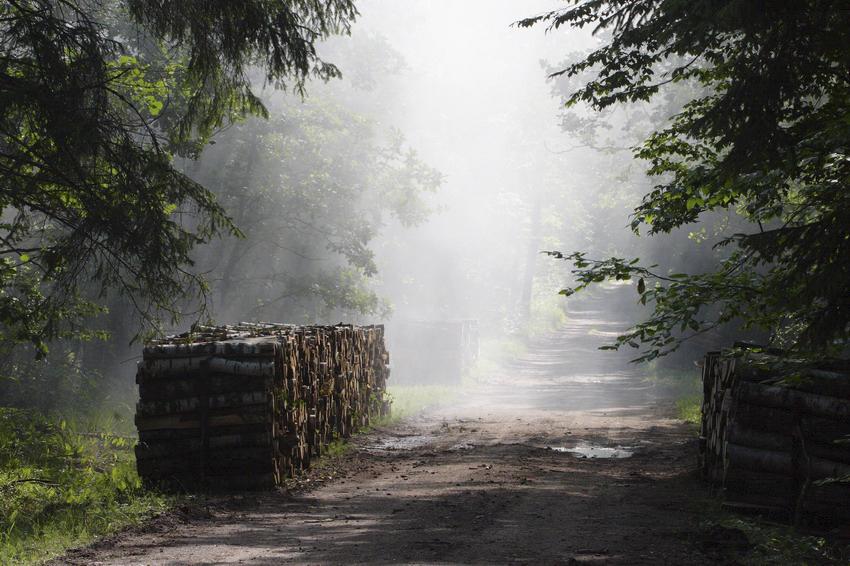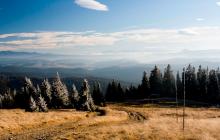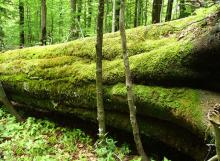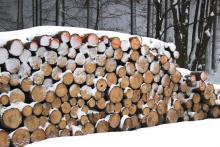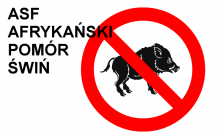 Asset Publisher
Asset Publisher
The State Forests National Forest Holding
The State Forests National Forest Holding is the largest organisation in the European Union managing forests, which belong to the State Treasury and celebrating its 90 anniversary this year.
Presently, we manage the area of one third of Poland's territory. Not long after the end of the Second World War, there was only 21 % of the area. Every year we plant 500 million of new trees, as we want Polish forests grow all the time.
Every year Polish foresters plant 500 million of trees.
85 % of nature reserves in Poland are located within the State Forests. 40 % of the forests managed by General Directorate of the State Forests are protected within the framework of European network Natura 2000. We fight against many threats: natural disasters, plaques of insects, trees' diseases, fires, pollutions, as well as poaching and vandalism.
We take care the forestry supplying the market with timber, as ecological and universal material, to be carried on in accordance with rules of balanced development (photography P.Fabjański).
One of our major tasks is making forests accessible to the society. We invite you to take advantage of these beautifully located within the forest wilderness holiday resorts, forester's lodges or guest rooms. That is for you, we create thousand kilometres of hiking trails, cycling paths or camping sites. All the above mentioned, you can find in service www.czaswlas.pl.
We also take care the forestry supplying the market with timber, as ecological and universal material, to be carried on in accordance with rules of balanced development. We obtain over 30 million of cubic meters of wood annually, twice as much as at the beginning of the nineties of the XX century.
Despite of this, the average of wood abundance per hectare of our forests is one fourth bigger than 20 years ago and 40% bigger than the average of European Union currently amounts.
In Poland in sectors connected with the forestry, there work about 375 thousand of people. It means that each 40 working Pole works in the forest.
In Poland in sectors connected with the forestry, there work about 375 thousand of people. It means that each 40 working Pole works in the forest. The sector of wood processing works out approximately 8 % of our GDP (Gross Domestic Product). Among others, thanks to the timber from the State Forests Poland is the 10 largest producer of furniture in the world, and the 4 largest furniture exporter.
The State Forests employ 25 thousand people. That way we are the 9 biggest employer in Poland. Among the largest companies in our country it takes 22 place in respect of its incomes and 11 place in respect of its profits. The value of assets, we manage, reaches 300 million zl. If we add social values, it will be worth one billion zlotych. We do not use money from the budget, but we earn money on our own to support the business. In spite of the financial crisis, since 2002, we continuously note down profits. Moreover, we pay taxes amounting 1,3 billion zl annually.
87 % of Poles think, the foresters are competent. We willingly share our knowledge of Polish forests, of their history and of nature values with the others. We publish books, periodicals, brochures; we also administer the website www.lasy.gov.pl . For children, the youth and teachers, we prepared internet service "E-lynx' Lynx Forest" (www.erys.pl). Our staff has supported schools in field of nature education for years. We also organise many actions to let people broaden their knowledge about forest, nature and ecology.
 Asset Publisher
Asset Publisher
Nocne Życie Lasu
Nocne Życie Lasu
Nadleśnictwo Ujsoły rozpoczeło realizację zadań w ramach projektu „Nocne życie lasu”, który skupia się na ochronie siedlisk oraz dwóch gatunków – mopka zachodniego i włochatki. Beneficjentem projektu jest Centrum Koordynacji Projektów Środowiskowych a Nadleśnictwo Ujsoły jest partnerem projektu i będzie realizować działania dotyczące włochatki.
Działania ochronne będą prowadzone w oparciu o oficjalne plany ochrony dla obszarów Natura 2000, parków narodowych i rezerwatów przez partnerów projektu:
-
Szkołę Główną Gospodarstwa Wiejskiego
-
Babiogórski Park Narodowy
-
RDLP w Krakowie
-
Nadleśnictwo Nowy Targ
-
Nadleśnictwo Ujsoły
-
Nadleśnictwo Złoty Potok
Głównym celem projektu jest wzmocnienie ochrony i zachowania przyrody, różnorodności biologicznej w ekosystemach leśnych, poprzez kompleksową, ponadregionalną ochronę populacji mopka i włochatki zasiedlających obszary Natura 2000.
Pierwszym zadaniem będzie inwentaryzacja przyrodnicza, której celem jest uzyskanie informacji na temat aktualnego stanu występowania gatunków objętych projektem. Po jej zakończeniu rozpoczną się działania ochrony czynnej: zakup i rozwieszenie budek dla włochatki wraz metalowymi opaskami zabezpieczającymi przed drapieżnikami oraz zakup i rozwieszenie budek dla mopka. W dalszej kolejności planuje się tworzenie schronów seminaturalnych, przystosowanie infrastruktury leśnej oraz zabezpieczanie jaskiń przed antropopresją.
Równocześnie realizować będziemy działania edukacyjne, mające na celu poszerzanie wiedzy lokalnych społeczności na temat gatunków zwierząt objętych projektem, takie jak warsztaty dla szkół, warsztaty dla środowisk specjalistycznych oraz wydarzenia tematyczne i warsztaty metodyczne. Dzięki nim możliwe będzie zwiększenie zaangażowania społeczności lokalnych w proces ochrony przyrody.
Projekt zakończy monitoring, który pomoże zmierzyć efektywność wykonanych działań ochronnych.
Na potrzeby prowadzenia wszystkich zadań terenowych zakupiony zostanie również specjalistyczny sprzęt (m.in. kamery leśne, dźwiękowe rejestratory czy GPS).
Całkowity koszt projektu to 2 940 681 zł, z czego 2 499 578,85 zł stanowi wysokość wkładu #FunduszeEuropejskie.
Przedsięwzięcie skierowane jest do:
-
przedstawicieli administracji rządowej oraz samorządowej odpowiedzialnych za ochronę przyrody/ planowanie przestrzenne – którzy otrzymają zaktualizowane informacje dotyczące gatunków oraz ich siedlisk, co będzie istotne w procesie wydawania decyzji administracyjnych/ środowiskowych;
-
pracowników LP, parków narodowych, uczelni wyższych oraz instytutów badawczych, którzy dzięki bezpośredniemu zaangażowaniu w realizowane przedsięwzięcie (warsztaty, szkolenia) podniosą swoje kompetencje, zaś uzyskane wyniki z prowadzonych działań inwentaryzacyjnych oraz monitoringowych w projekcie będą stanowić podstawę/ materiał wyjściowy do dalszych badań, publikacji, etc.
-
ogółu społeczeństwa: uczniowie, społeczności lokalne z terenów, gdzie będzie realizowany projekt – uczestnictwo w działaniach edukacyjnych pozwoli lepiej zrozumieć znaczenie ochrony przyrody i zagrożenia dla różnorodności biologicznej.
Głównym rezultatem projektu będzie wykonanie działań ochronnych dla 2 gatunków zwierząt: mopka i włochatki. Ponadto, zgodnie z założeniami projektu, działania ochronne na ich rzecz przyczynią się do wsparcia 42 880 ha siedlisk przyrodniczych w celu uzyskania lepszego statusu ochrony.
#FunduszeUE


 fot. Paweł Fabijański
fot. Paweł Fabijański
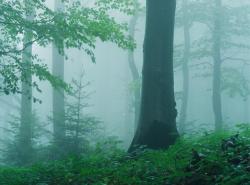 fot. Paweł Fabijański
fot. Paweł Fabijański
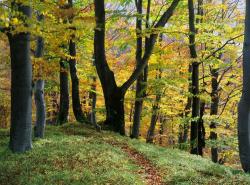 fot. Paweł Fabijański
fot. Paweł Fabijański
